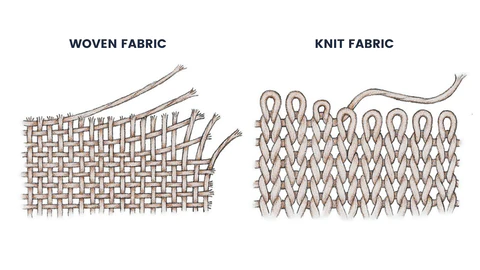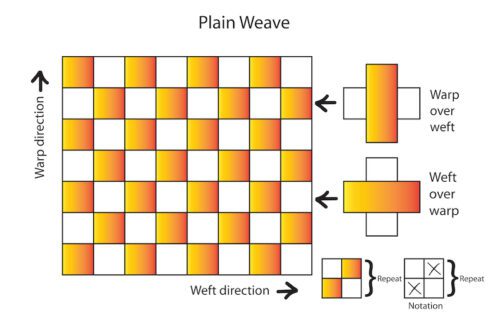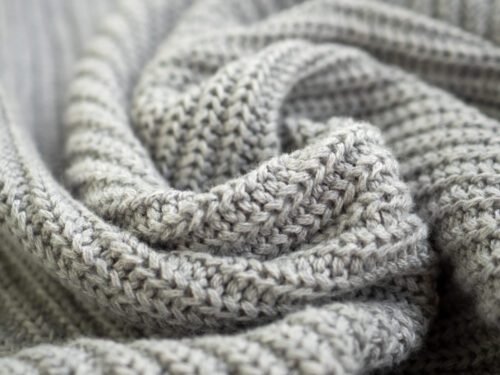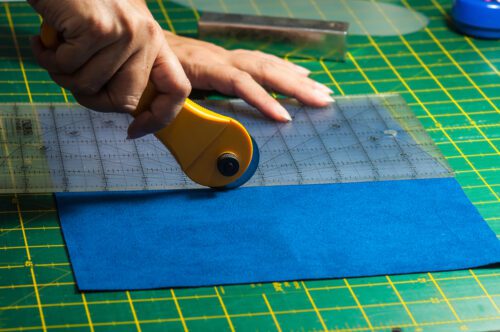
Woven fabrics and knit fabrics are two distinct types of textiles that are created using different methods. Understanding the main differences between these two types of fabrics is essential for any sewist, as it can help them choose the right fabric for their projects and use it to its full potential. In this article, we will explore the main differences between woven and knit fabrics and discuss how sewists can detect the differences and use them to their advantage.


One of the most significant differences between woven and knit fabrics is the way they are constructed. Woven fabrics are made by interlacing threads that run horizontally (the weft threads) and vertically (the warp threads) to create a stable, interlocking structure. This process creates a strong, durable fabric that is ideal for a wide range of sewing projects, including clothing, bags, and home decor items.


On the other hand, knit fabrics are created using a series of interlocking loops that are formed using a single thread or yarn. Knit fabrics are typically stretchier and more flexible than woven fabrics, making them ideal for garments that need to stretch and move with the body, such as t-shirts and leggings. They are also generally softer and more comfortable to wear than woven fabrics. For more information on sewing with stretchy knit fabrics, please check out this article.
Another significant difference between woven and knit fabrics is the way they behave when cut or sewn. Woven fabrics tend to fray easily and require a more precise cut to avoid unraveling. They also have a more defined drape and tend to hold their shape better than knit fabrics. Knit fabrics, on the other hand, are more forgiving when it comes to cutting and sewing, as they do not fray and can stretch to accommodate misaligned seams.
There are several ways that sewists can detect the differences between woven and knit fabrics. One of the easiest ways is to look at the edges of the fabric. Woven fabrics will have a defined edge, while knit fabrics will have a more “looped” or “curled” edge. Another way to tell the difference is to try stretching the fabric. Woven fabrics will resist stretching and will typically bounce back to their original shape when released, while knit fabrics will stretch easily and may not bounce back to their original shape.
Sewists can use these differences to their advantage when choosing fabrics for their projects. For example, if you are making a structured garment, such as a jacket or dress, a woven fabric may be a better choice due to its stability and defined drape. On the other hand, if you are making a garment that needs to stretch and move with the body, such as leggings or a t-shirt, a knit fabric may be a better choice.


There are also several techniques that sewists can use to get the most out of their woven or knit fabrics. For woven fabrics, using the proper cutting techniques, such as using a rotary cutter or pinking shears, can help prevent fraying and unraveling. Sewing with a stabilizer or interfacing can also help to provide added support and stability to a woven fabric.
For knit fabrics, using a stretch or ballpoint needle can help to prevent skipped stitches and puckered seams. Sewing with a serger or using a narrow zigzag stitch can also help to provide a more flexible and comfortable seam for knit fabrics.
In conclusion, woven and knit fabrics are two distinct types of textiles that are created using different methods and have different properties. Understanding the main differences between these two types of fabrics is essential for any sewist, as it can help them choose the right fabric for their projects and use it to its full potential. By learning to detect the differences between woven and knit fabrics and using the proper techniques, sewists can get the most out of their fabrics and create garments and other sewing projects that are well-suited to their needs and preferences.
It is also worth noting that there are many sub-categories within both woven and knit fabrics, each with its own unique properties and characteristics. For example, within the category of woven fabrics, there are different types of weaves, such as plain weave, twill weave, and satin weave, which can affect the way the fabric looks and behaves. Similarly, within the category of knit fabrics, there are different types of knit patterns, such as rib knit, cable knit, and jersey knit, which can also affect the way the fabric looks and behaves.
By understanding the specific characteristics of different woven and knit fabrics, sewists can choose the right fabric for their projects and use it to its full potential. Whether you are a beginner or an experienced sewist, taking the time to learn about the differences between woven and knit fabrics can help you create sewing projects that are both beautiful and functional.
Have we missed any of the key differences? Please let us know in the comments below.








What dress patterns of yours can be made with woven fabric?
Hi Sandy, Thank you for the question because it made me look back and realised I have not really shared woven fabric projects as much as I would like to but, I did find a few. I will make a post because I do want others to find this patterns. I am also finishing a wrap dress I intend to wear in my upcoming trip to Portugal. Stay Tuned please!